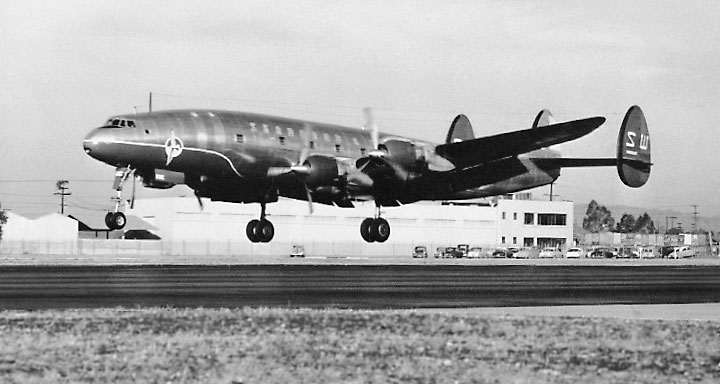In the Connie days, there were no flight simulators that accurately duplicated the cockpits and handling characteristics of airliners. Flight training was done in airplanes of the same type to which the crewmembers were assigned.
On the morning of November 10, 1958, N6503C, a Seaboard & Western Lockheed L‑1049D Super Constellation, named Paris Airtrader, started its takeoff roll on runway 31R at what was then Idlewild Airport (now JFK). It was to be a training flight under the command of Captain Ralph Neary, sitting in the right (co‑pilot) seat. Sitting in the captain's seat, and flying the aircraft, was Captain Henry Van Nuys. The flight engineer was Gene Gasselle. Also aboard for training were co‑pilot Bill Dodds and flight engineer Harold "Tippy" Ferarra. Unlike most Super Connies which had Hamilton Standard hydraulic propellers, 03C and the rest of Seaboard's Connies, except one, had Curtiss Electric props. After the aircraft took off and reached an altitude of approximately 25 feet, the number 1 propeller malfunctioned and went into reverse, causing a loss of directional control. The aircraft rolled left approximately 20 to 30 degrees, causing the left wing to strike the runway. 03C veered off the runway and smashed into a Trans-Canada Airlines Vickers Viscount parked at the gate, only eight minutes before forty-four passengers were scheduled to board the Viscount. Only two people were onboard at the time of the crash. The Viscount prevented the Connie from crashing into the old terminal, crowded with people at ground level. The third bit of good luck was that the crash occurred right in front of the airport's fire station. The firemen responded promptly and sprayed the wreckage with fire-fighting foam. A Trans-Canada stewardess fell and was injured slightly while running from the Viscount. All five Seaboard crew members jumped from the main cabin door which was approximately four feet above ground level and escaped without serious injury. One of them, copilot Bill Dodds, slightly burned his hand on the door handle.
Both aircraft were destroyed by the collision and ensuing fire.
The accident report concluded that the probable cause was
"An unwanted propeller reversal at a low altitude occurring immediately after takeoff. A contributing factor was the inadequate overhaul procedure employed by the propeller manufacturer."
